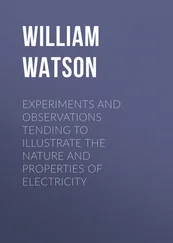Mark Changizi - Harnessed - How Language and Music Mimicked Nature and Transformed Ape to Man
Здесь есть возможность читать онлайн «Mark Changizi - Harnessed - How Language and Music Mimicked Nature and Transformed Ape to Man» весь текст электронной книги совершенно бесплатно (целиком полную версию без сокращений). В некоторых случаях можно слушать аудио, скачать через торрент в формате fb2 и присутствует краткое содержание. Год выпуска: 2011, Издательство: Perseus Books Group, Жанр: Старинная литература, на английском языке. Описание произведения, (предисловие) а так же отзывы посетителей доступны на портале библиотеки ЛибКат.
- Название:Harnessed: How Language and Music Mimicked Nature and Transformed Ape to Man
- Автор:
- Издательство:Perseus Books Group
- Жанр:
- Год:2011
- ISBN:нет данных
- Рейтинг книги:5 / 5. Голосов: 1
-
Избранное:Добавить в избранное
- Отзывы:
-
Ваша оценка:
- 100
- 1
- 2
- 3
- 4
- 5
Harnessed: How Language and Music Mimicked Nature and Transformed Ape to Man: краткое содержание, описание и аннотация
Предлагаем к чтению аннотацию, описание, краткое содержание или предисловие (зависит от того, что написал сам автор книги «Harnessed: How Language and Music Mimicked Nature and Transformed Ape to Man»). Если вы не нашли необходимую информацию о книге — напишите в комментариях, мы постараемся отыскать её.
Harnessed: How Language and Music Mimicked Nature and Transformed Ape to Man — читать онлайн бесплатно полную книгу (весь текст) целиком
Ниже представлен текст книги, разбитый по страницам. Система сохранения места последней прочитанной страницы, позволяет с удобством читать онлайн бесплатно книгу «Harnessed: How Language and Music Mimicked Nature and Transformed Ape to Man», без необходимости каждый раз заново искать на чём Вы остановились. Поставьте закладку, и сможете в любой момент перейти на страницу, на которой закончили чтение.
Интервал:
Закладка:
With our memory jogged about the meaning of pitch, what are the expected musical consequences of Newton’s First Law? A change in melody’s pitch means the fictional mover’s direction of motion has changed. Let’s ask ourselves, then: if a mover changes direction, is there any physical tendency for the mover to continue changing direction? Purely physically, Newton’s First Law tells us no . Any subsequent turn would require yet more force, without which the mover will continue going in whatever direction it was going. When a moving object for some reason makes a 30-degree change in direction, the inertial tendency is precisely not to continue turning, but to continue going straight in the new direction. (The same is true if a change in Doppler pitch is due to a change in speed—a change in speed does not lead to a further change in speed—but I’ll always presume movers are staying at constant speed, the relevant case for music at constant tempo.)
The pitch of a mover, then, following the physics of movement itself, tends to stay the same. And if the pitch does change, it will have a tendency to stay at the new pitch—the mover’s new direction— not to continue changing pitch. Newton’s First Law for the pitches of movers is, therefore, that pitches have no inertia. Inertia is about how spatial changes tend to continue, not about how velocity (speed and direction) changes tend to continue. And because pitch is about velocity (i.e., speed and direction), not spatial location, pitch changes do not tend to continue. (If one were to imagine a spatial metaphor for how pitch changes, it would be movement of a bead in thick syrup: it moves if pushed with a fork, but immediately halts when no longer pushed.)
If melody’s pitch contour acts like the Doppler pitches of a mover, then musical pitch is expected to have no “inertia” to continue moving in the same direction —“up” or “down.” I had Sean Barnett carry out an analysis on the entire data set of 10,000 classical themes, and we found that indeed, there was little or no inertia for pitch, just as is expected if melodic pitch contours sound like Doppler pitches from moving humans. In particular, for a one-semitone change, the probability of continuing up after a semitone up was 49.14 percent, and the probability of continuing down after a semitone down was 51.33 percent. For two semitones, the values were 47.06 percent and 56.17 percent. Pitches therefore do not act like spatial location: if pitch were spatial, then a change in pitch would tend to lead to more of the same kind of change due to inertia, and those percentages I just mentioned should have all been much greater than 50 percent. Instead, and as predicted, pitches have little or no tendency to continue changing the same way they have been. Pitches act like Doppler shifts, following the expectations of Newton’s First Law of Motion by not exhibiting pitch inertia (because inertia does not apply to directions of motion).
Although our data showed no strong bias toward pitch changes continuing in the same direction (which is the signature of true spatial momentum), note that there was, for both one- and two-semitone changes, a slightly greater tendency for pitches to go down—a small degree of downward momentum. To further examine this, I need to discuss some subtleties I have glossed over so far.
The ecological interpretation of pitch is the mover’s direction of motion, but more carefully expressed, it is the mover’s direction of motion relative to the listener . With this in mind, there are actually two fundamentally different ways for a mover’s Doppler pitch to change. The first is what I have assumed in this section thus far: the mover turns. But Doppler pitch can change even when the mover does not turn, and this second source of changing Doppler pitch you are very familiar with, because it happens every time a mover passes you, including the generic passing train. When movers pass listeners, their pitch falls. In fact, whenever an object simply moves straight its pitch falls (unless the object is directed perfectly toward or away from the listener). It is not, then, quite right to say that Doppler pitches have no pitch momentum. Straight-moving movers have falling pitch, and straight-moving movers tend to keep going straight (because of inertia), and therefore falling pitch in these circumstances does tend to keep on falling.
If only we could tell the difference between the pitch changes due to a mover actually turning and the pitch changes due to a mover simply going straight! We could then predict a lack of pitch momentum for the former, but predict the presence of pitch momentum for the latter. Actually, we can tell them apart. When a mover turns, it is intentional and occurs fairly quickly (on average about 45 degrees per step, as discussed earlier in the section of Chapter 4 called “Human Curves”), and it can be a change in direction either more or less toward the listener. Intentional turning behavior therefore tends to lead to large pitch changes that can be upward or downward. But the second source of Doppler pitch change is the one due to movers going straight (and going by). In this case there tend to be a lot of steps over which pitch falls—because now the falling pitch is, in essence, due to continuous change of position in space—and so the pitch change per step is small, and is always downward.
Here, then, is how we can distinguish the straight-moving mover from the turning mover. When pitch falls by only a small amount, it tends to be the signature of a straight-moving mover passing. But when the pitch change is not consistently small and downward, it is typically due to the mover turning. Thus, a turning mover is given away by either of two pitch cues: (i) a large pitch change, whether upward or downward, implicates a turning mover, and (ii) any pitch change upward at all, small or large, implicates a turning mover (because straight-moving movers only have falling pitch, not rising pitch).
We do therefore expect Doppler pitch to possess inertia in just one circumstance: when pitch falls by a small amount. Small drops in pitch are more probably attributable to a straight-moving mover. Because straight movers have inertia and are thus likely to continue moving straight, small pitch drops do tend to have inertia. Small pitch upswings do not, however, have inertia, and neither do large pitch changes, whether up or down.
Is this what we find in music?
We already saw evidence for this earlier in this section. Recall that there was generally little or no inertia for pitch—the probability of a pitch change continuing in the same direction was near 50 percent. But let’s look at the pitch momentum numbers again, more carefully this time. For a semitone pitch change, the probability of continuing in the same direction was 49.14 percent and 51.33 percent for upward and downward, respectively. (Their standard errors are small—0.005 and 0.004, respectively—because these are averages across many thousands of instances.) The same asymmetry was found when considering whole-step changes of pitch, but now with respective values of 47.06 percent and 56.17 percent. (Standard errors are each 0.004.) These results are consistent with those of Paul von Hippel that David Huron discusses in his book Sweet Anticipation : no momentum following small steps upwards, but significant momentum downwards. The signature of pitch momentum is a value greater than 50 percent, and only the downward pitch change has this. (Upward pitch change is below 50 percent, meaning that a little more than half of the time a semitone upward is followed by either no change in pitch or a downward change in pitch.) For larger pitch changes, we found that neither upward nor downward pitch changes had any pitch momentum (i.e., the probability of continuing to change in the same direction was below 50 percent). Not only, then, does melodic pitch contour have a counterintuitive tendency to have no inertia, like the pitches of movers—but it breaks this tendency exactly when movers do. Consistent with melody’s meaning coming from the Doppler shifts of movers, melody conforms to Newton’s law of inertia.
Читать дальшеИнтервал:
Закладка:
Похожие книги на «Harnessed: How Language and Music Mimicked Nature and Transformed Ape to Man»
Представляем Вашему вниманию похожие книги на «Harnessed: How Language and Music Mimicked Nature and Transformed Ape to Man» списком для выбора. Мы отобрали схожую по названию и смыслу литературу в надежде предоставить читателям больше вариантов отыскать новые, интересные, ещё непрочитанные произведения.
Обсуждение, отзывы о книге «Harnessed: How Language and Music Mimicked Nature and Transformed Ape to Man» и просто собственные мнения читателей. Оставьте ваши комментарии, напишите, что Вы думаете о произведении, его смысле или главных героях. Укажите что конкретно понравилось, а что нет, и почему Вы так считаете.












